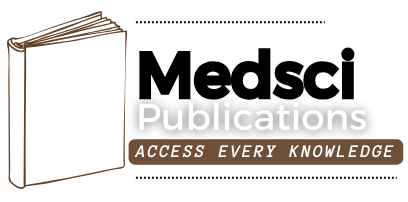Dengue Fever: Addressing Ghana’s Emerging Public Health Crisis
DOI:
https://doi.org/10.55489/njcm.160620255009Keywords:
Ghana, Disease transmission, Aedes aegypti, Vector control, Dengue vaccineAbstract
This study explores the public health concerns, challenges, and solutions surrounding dengue fever reemergence in Ghana. Several environmental factors such as open drainage system, improper waste disposal, improper storage of water influence the transmission of dengue disease in Ghana. Ghana is also dealing with issues related to increased global commerce and tourism, inadequate sanitation such as open drainage system, improper waste disposal and inadequate mosquito control measures which could lead to increased vulnerability to dengue outbreaks. Poor healthcare infrastructure, poverty, geographical inaccessibility, a shortage of skilled healthcare workers, lack of awareness among community members, and weak vector surveillance system further exacerbate the issue. Thus, there is an urgent need for coordinated efforts among policymakers, healthcare professionals, and the general public. Increasing public awareness through co-creation approaches, strengthening laboratory diagnostics, investing in healthcare professionals training, scaling up integrated vector management activities stakeholders can mitigate the risk of severe dengue complications in Ghana.
References
Kularatne SA, Dalugama C. Dengue infection: Global importance, immunopathology and management. Clinical Medicine. 2022;22(1):9-13. DOI: https://doi.org/10.7861/clinmed.2021-0791 PMid:35078789 PMCid:PMC8813012
How Dangerous is Dengue? | Johns Hopkins | Bloomberg School of Public Health. Published April 3, 2024. Accessed November 16, 2024. https://publichealth.jhu.edu/2024/what-is-dengue-fever
Tsheten T, Clements ACA, Gray DJ, Adhikary RK, Furuya-Kanamori L, Wangdi K. Clinical predictors of severe dengue: a systematic review and meta-analysis. Infect Dis Poverty. 2021;10(1):123. DOI: https://doi.org/10.1186/s40249-021-00908-2 PMid:34627388 PMCid:PMC8501593
Almeida LS, Cota ALS, Rodrigues DF. Saneamento, Arboviroses e Determinantes Ambientais: impactos na saúde urbana. Ciênc saúde coletiva. 2020;25(10):3857-3868. DOI: https://doi.org/10.1590/1413-812320202510.30712018 PMid:32997018
Satoto TBT, Satrisno H, Lazuardi L, et al. Insecticide resistance in Aedes aegypti: An impact from human urbanization? Samy AM, ed. PLoS ONE. 2019;14(6):e0218079. DOI: https://doi.org/10.1371/journal.pone.0218079 PMid:31233517 PMCid:PMC6590797
Kakde U, Khatib MN. Neurological Complications in Dengue Among Males of the Adult Age Group. Cureus. Published online January 3, 2024. DOI: https://doi.org/10.7759/cureus.51586
Kulkarni R, Pujari S, Gupta D. Neurological Manifestations of Dengue Fever. Annals of Indian Academy of Neurology. 2021;24(5):693-702. DOI: https://doi.org/10.4103/aian.AIAN_157_21 PMid:35002126 PMCid:PMC8680870
Bhatt S, Gething PW, Brady OJ, et al. The global distribution and burden of dengue. Nature. 2013;496(7446):504-507. DOI: https://doi.org/10.1038/nature12060 PMid:23563266 PMCid:PMC3651993
Weaver SC. Urbanization and geographic expansion of zoonotic arboviral diseases: mechanisms and potential strategies for prevention. Trends in Microbiology. 2013;21(8):360-363. DOI: https://doi.org/10.1016/j.tim.2013.03.003 PMid:23910545 PMCid:PMC5193003
Zahouli JBZ, Utzinger J, Adja MA, et al. Oviposition ecology and species composition of Aedes spp. and Aedes aegypti dynamics in variously urbanized settings in arbovirus foci in southeastern Côte d'Ivoire. Parasites Vectors. 2016;9(1):523. DOI: https://doi.org/10.1186/s13071-016-1778-9 PMid:27682270 PMCid:PMC5041276
Samson DM, Archer RS, Alimi TO, et al. New baseline environmental assessment of mosquito ecology in northern Haiti during increased urbanization. Journal of Vector Ecology. 2015;40(1):46-58. DOI: https://doi.org/10.1111/jvec.12131 PMid:26047183 PMCid:PMC4458708
Telle O, Nikolay B, Kumar V, et al. Social and environmental risk factors for dengue in Delhi city: A retrospective study. Horstick O, ed. PLoS Negl Trop Dis. 2021;15(2):e0009024. DOI: https://doi.org/10.1371/journal.pntd.0009024 PMid:33571202 PMCid:PMC7877620
Dengue: Guidelines for Diagnosis, Treatment, Prevention and Control: New Edition. Geneva: World Health Organization; 2009. 4, Laboratory Diagnosis and Tests. Available from: https://www.ncbi.nlm.nih.gov/books/NBK143156/ Ac-cessed November 16, 2024.
Al-Worafi YM. Dengue Fever Management in Developing Countries. In: Al-Worafi YM, ed. Handbook of Medical and Health Sciences in Developing Countries. Springer International Publishing; 2024:1-24. DOI: https://doi.org/10.1007/978-3-030-74786-2_63-1
Narkwa PW, Mutocheluh M, Kwofie TB, et al. Dengue virus exposure among blood donors in Ghana. J Med Biomed Sci. 2016;5(2):30-35. DOI: https://doi.org/10.4314/jmbs.v5i2.5
Jain S, Sharma S. Challenges & options in dengue prevention & control: A perspective from the 2015 outbreak. Indian J Med Res. 2017;145(6):718. DOI: https://doi.org/10.4103/ijmr.IJMR_1325_16 PMid:29067972 PMCid:PMC5674540
Oppong J, Avicor SW, Baidoo PK, et al. Mosquito Control Strategies and Insecticide Resistance of the Malaria Vector in Urbanized Land Use Types in Suame Municipality, Ghana. J Trop Med. 2024;2024:5843481. DOI: https://doi.org/10.1155/2024/5843481 PMid:39119198 PMCid:PMC11309813
K. Moise I, C. Zulu L, O. Fuller D, C. Beier J. Persistent Barriers to Implementing Efficacious Mosquito Control Activities in the Continental United States: Insights from Vector Control Experts. In: J. Rodriguez-Morales A, ed. Current Topics in Neglected Tropical Diseases. IntechOpen; 2019. DOI: https://doi.org/10.5772/intechopen.76774
Parveen S, Riaz Z, Saeed S, et al. Dengue hemorrhagic fever: a growing global menace. Journal of Water and Health. 2023;21(11):1632-1650. DOI: https://doi.org/10.2166/wh.2023.114 PMid:38017595
Waltz E. US reviews plan to infect mosquitoes with bacteria to stop disease. Nature. 2016;533(7604):450-451. DOI: https://doi.org/10.1038/533450a PMid:27225098
Adelman ZN, Tu Z. Control of Mosquito-Borne Infectious Diseases: Sex and Gene Drive. Trends in Parasitology. 2016;32(3):219-229. DOI: https://doi.org/10.1016/j.pt.2015.12.003 PMid:26897660 PMCid:PMC4767671
Directorate of National Vector Borne Disease Control Programme. Manual on Integrated Vector Management. Published online 2015. Accessed April 30, 2025. Availbale from: https://ncvbdc.mohfw.gov.in/WriteReadData/l892s/IVM-Manual-Draft-2015.pdf
Naz R, Gul A, Javed U, Urooj A, Amin S, Fatima Z. Etiology of acute viral respiratory infections common in Pakistan: A review. Reviews in Medical Virology. 2019;29(2):e2024. DOI: https://doi.org/10.1002/rmv.2024 PMid:30548740 PMCid:PMC7169323
Ouédraogo S, Benmarhnia T, Bonnet E, et al. Evaluation of Effectiveness of a Community-Based Intervention for Control of Dengue Virus Vector, Ouagadougou, Burkina Faso. Emerg Infect Dis. 2018;24(10):1859-1867. DOI: https://doi.org/10.3201/eid2410.180069 PMid:30226159 PMCid:PMC6154160
Abidemi A, Aziz NAB. Optimal control strategies for dengue fever spread in Johor, Malaysia. Computer Methods and Programs in Biomedicine. 2020;196:105585. DOI: https://doi.org/10.1016/j.cmpb.2020.105585 PMid:32554024
Torres-Flores JM, Reyes-Sandoval A, Salazar MI. Dengue Vaccines: An Update. BioDrugs. 2022;36(3):325-336. DOI: https://doi.org/10.1007/s40259-022-00531-z PMid:35608749 PMCid:PMC9127483
World Health Organization. Dengue vaccine: WHO position paper, July 2016 - recommendations. Vaccine. 2017;35(9):1200-1201. DOI: https://doi.org/10.1016/j.vaccine.2016.10.070 PMid:28185744
Downloads
Published
How to Cite
Issue
Section
License
Copyright (c) 2025 Felix Amekpor, Snehasish Tripathy, Ebuka Louis Anyamene, Wucharey Kwasi Daniel, Anyannor Emmanuel, Vini Mehta

This work is licensed under a Creative Commons Attribution-ShareAlike 4.0 International License.
The authors retain the copyright of their article, with first publication rights granted to Medsci Publications.










